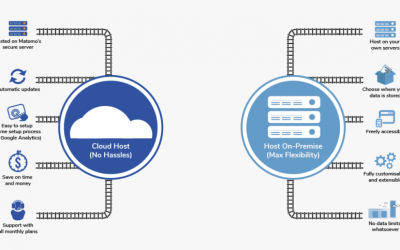In today’s digital age, the adoption of cloud computing has become an integral part of business strategies across industries. The cloud offers numerous benefits, such as scalability, flexibility, and improved collaboration. However, amidst the advantages, Chief Financial Officers (CFOs) are increasingly finding themselves faced with a pressing concern—the growing costs of the cloud. In this blog, we will explore the reasons why CFOs need to worry about the expanding expenses associated with cloud computing and how they can effectively manage and optimize their cloud investments.
1. Uncontrolled Spending
The cloud provides organizations with the freedom to scale their infrastructure based on demand. While this flexibility is advantageous, it can lead to uncontrolled spending if not managed properly. With the ease of provisioning cloud resources, teams often overlook proper monitoring and cost optimization, resulting in unnecessary expenses. CFOs need to be aware of this potential pitfall and work closely with IT teams to implement robust cost management strategies.
2. Complex Pricing Models
Cloud service providers offer a wide range of pricing models, including pay-as-you-go, reserved instances, and spot instances. While these options provide flexibility, they also introduce complexity in understanding, predicting, and managing costs. CFOs must have a thorough understanding of the pricing models being utilized by their organization and ensure they align with the business’s requirements and usage patterns. Proper analysis and forecasting can help in optimizing cloud spending and avoiding unexpected financial burdens.
3. Lack of Cost Visibility
As organizations increasingly adopt multi-cloud or hybrid cloud environments, keeping track of costs across different platforms can become a significant challenge. The lack of cost visibility makes it difficult for CFOs to accurately allocate and attribute cloud expenses to various departments or projects. Without proper visibility, it becomes challenging to optimize costs and identify areas where efficiencies can be achieved. Implementing cost management tools and establishing clear cost-tracking processes can help address this issue.
4. Data Transfer and Egress Charges
While the cloud offers immense storage capacity and computational power, CFOs need to be mindful of the costs associated with data transfer and egress. Transferring large volumes of data into and out of the cloud can result in unexpected expenses. Organizations with significant data transfer requirements, such as those dealing with big data analytics or multimedia content, need to factor in these costs when planning their cloud budgets. CFOs should work closely with IT teams to optimize data transfer and implement efficient storage and caching mechanisms to reduce unnecessary expenses.
5. Vendor Lock-In and Negotiation
Vendor lock-in is a concern that CFOs need to consider when moving their infrastructure to the cloud. Transferring applications and data from one cloud provider to another can be complex and costly. Furthermore, negotiating favorable pricing and contract terms with cloud service providers can be challenging, especially as organizations become increasingly reliant on their services. CFOs need to approach cloud vendor selection and negotiation with a strategic mindset, considering long-term costs and ensuring that they have flexibility and leverage in their contracts.
At OpenSys, we understand that the cloud continues to play a vital role in digital transformation. We work with CFOs and CIOs proactively to address the challenge of growing costs associated with its adoption. We bring our decades of knowledge on the nuances of cloud pricing models, we help you implement robust cost management strategies, and optimize resource utilization. With our tried and tested methodologies CFOs and CIOs can effectively navigate the complexities of cloud spending and manage their budgets more effectively. We help you strike a balance between cost optimization and leveraging the benefits of the cloud to drive innovation and business growth.




